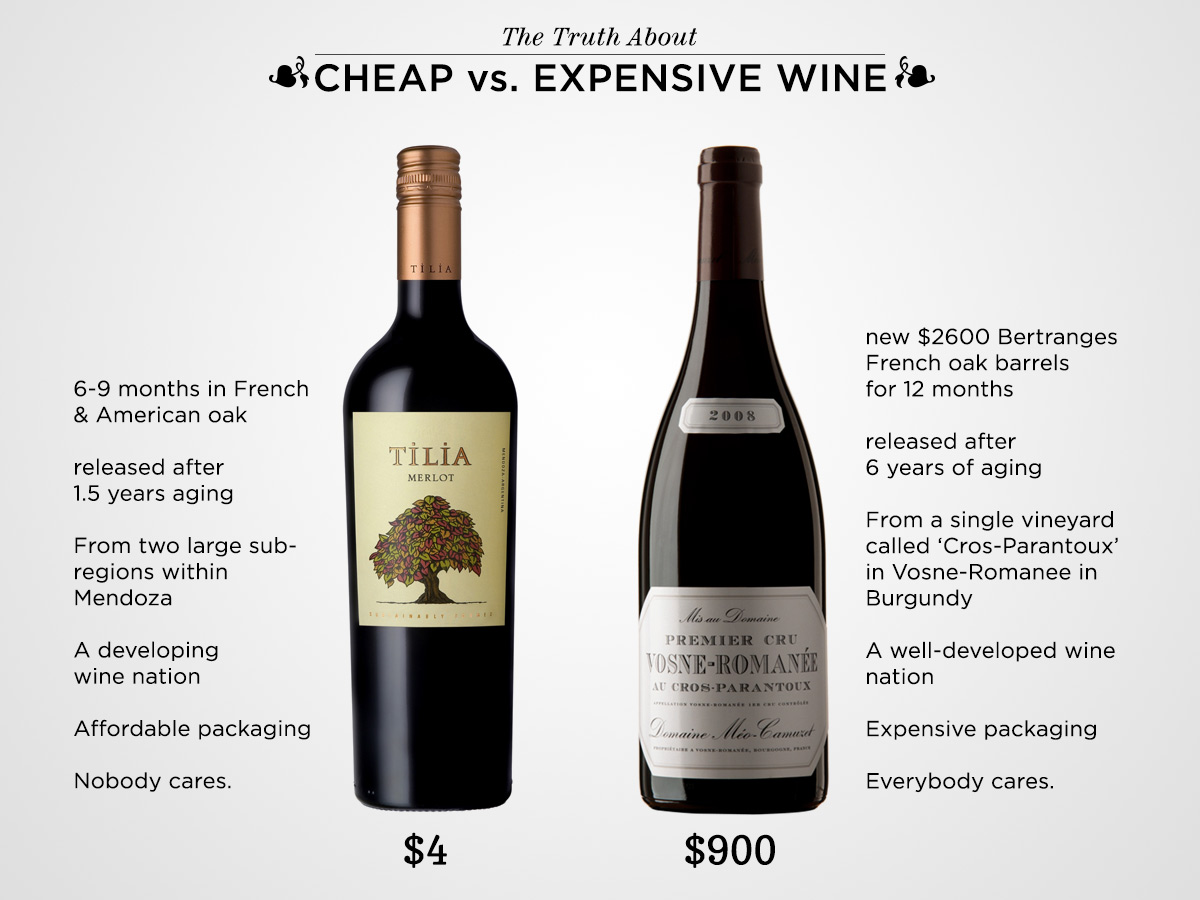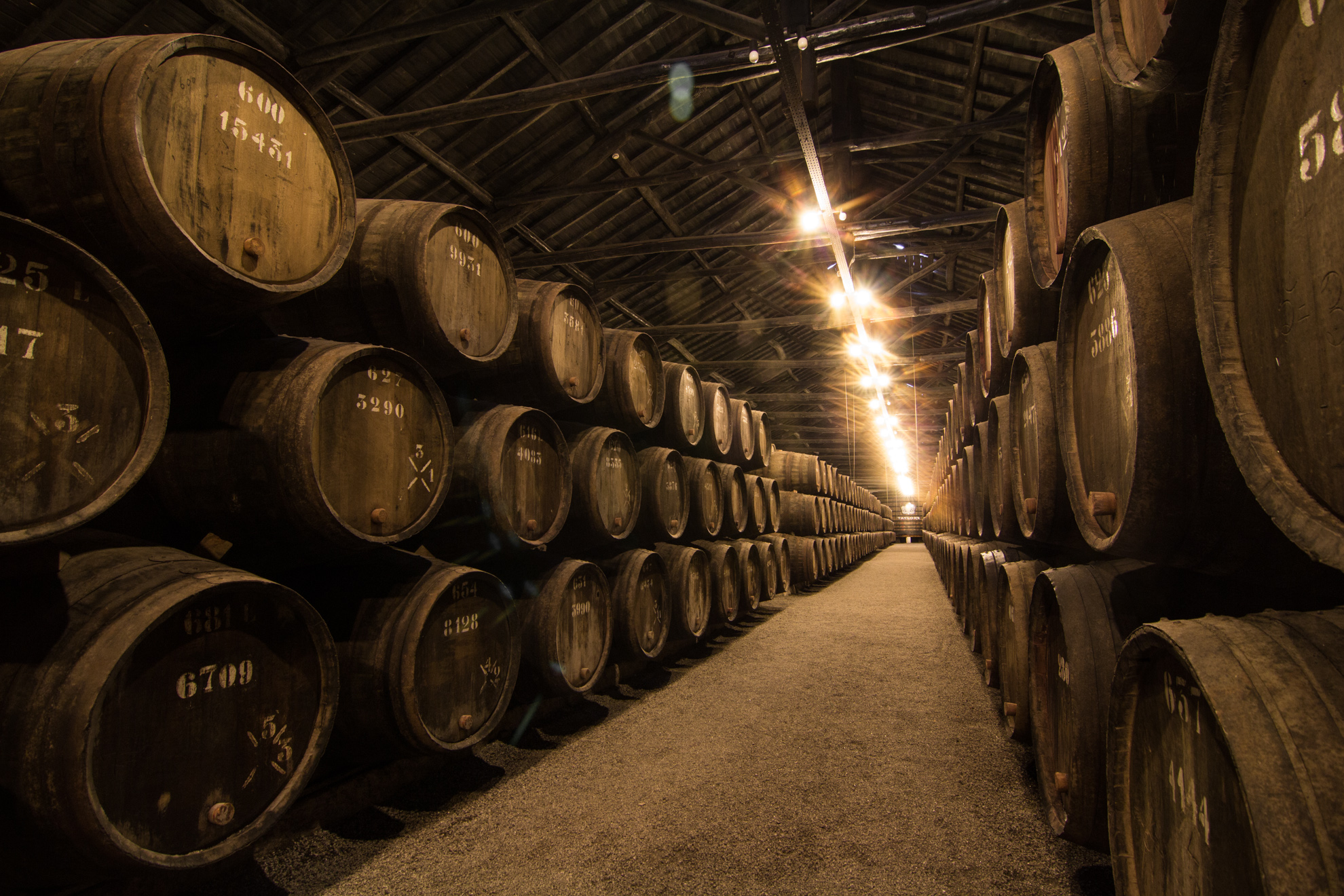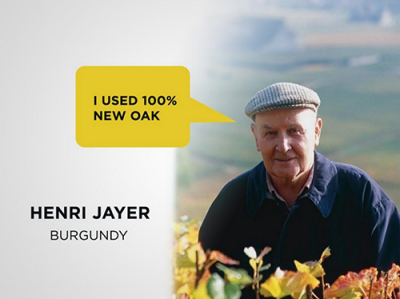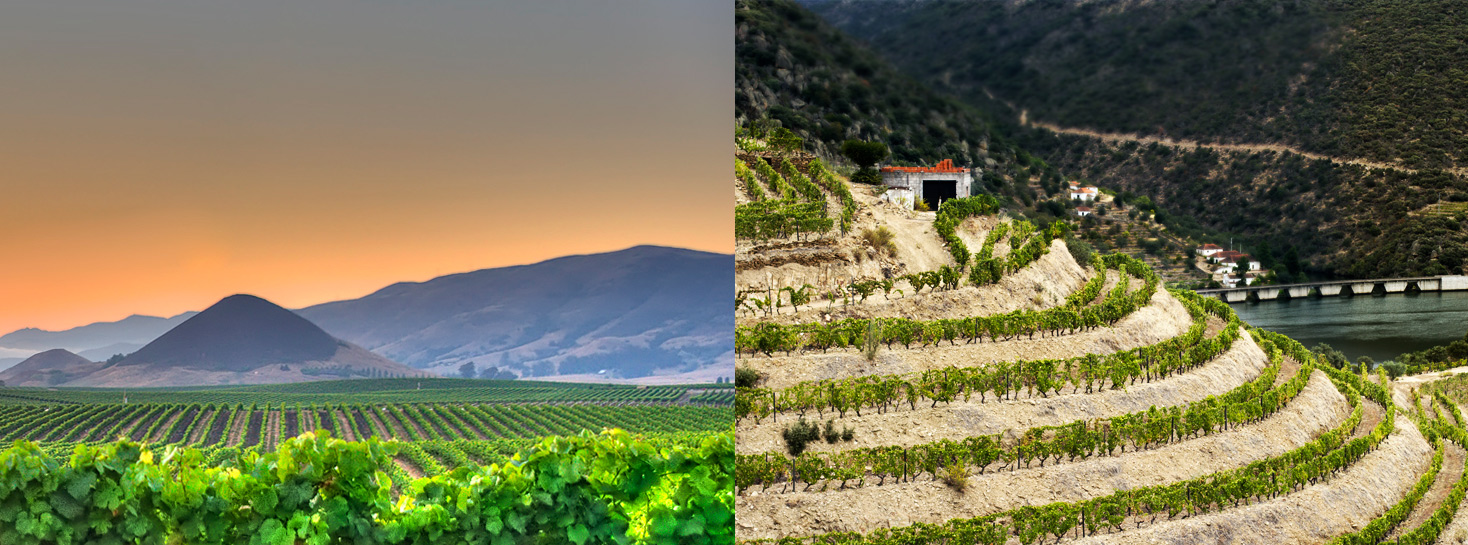The Truth About Cheap vs. Expensive Wine

These two wines are world’s apart both in winemaking methods but also the perception of that region’s importance in the world.
You’ve probably searched your local wine store over for that $5 bottle that tastes like a $20 bottle or that $15 wine that could easily pass itself off as a $100 wine. What are the basic factors that make wine expensive? And, are these factors imaginary or real?
Is it possible to find fancy wine traits in more affordable wines? In your search for the ultimate ‘QPR’ wine (ahem, ‘Quality Price Ratio’), use these tips to seek out better wine.
What Makes Wine Expensive?
There are three major traits to expensive wine and they are oak, time and terroir. Of course, it’s possible to find these traits in value wines, if they are from developing wine countries.
Oak

Wine ages in barrels to evolve more nutty flavors at Taylor’s in Portugal. by Justin Hammack
The most coveted wines in the world age their wines in oak, and many use new oak. Putting wine in an oak barrel does 2 things; it adds oak ‘flavors’ to a wine (such as vanilla and baking spice) and it exposes the wine to oxygen. Oxygen does some amazing stuff to wine: the tannins become less intense and the taste of the wine becomes smoother. Since oxygen permeates through the barrels, some of the wine inside also evaporates at a rate of about 2% per year. This evaporation is called the ‘angel’s share’ but the result is that the wine in the barrel tastes more concentrated.
Oak flavors in Red Wine
- Vanilla, Clove, Allspice, Nutmeg
- Coconut, Almond
- Mocha, Milk Chocolate
- Dill, Eucalyptus
- Cedar box, Smoke, Sweet Tobacco, Newly Tanned Leather, Sweaty Socks
Oak flavors in White Wine
- Vanilla, Marzipan, Creme Brûlée, Caramel, Brown Sugar
- Candied Fruits, Dried Fruit, Raisin
- Dill
How Much to Expect to Spend
$2-4 more in cost per bottle Oak barrels are expensive because only 2 barrels can be made from an 80 year old oak tree. French barrels are in demand so they cost about twice as much as American barrels. Find out more about oaking wine

Need some examples?
FRANCE: A great example of an expensive wine made with French oak is Cros Parantoux by Henri Jayer (On-ree Shza-yay). This $5,200 bottle of wine from Burgundy was produced using 100% new oak. Henri Jayer was an instrumental figure in turning around the quality in Burgundy wine. He died in 2006 and today his nephew, Emmanuel Rouget, makes Cros Parantoux.
USA: A great example of a much less expensive wine (but still quite fancy) that uses American oak barrels is called Silver Oak . This wine is one of the few wines championing the use of the much more locally sustainable American oak grown in Missouri.
Time

Reserva and Gran Reserva Rioja wines aging in large storage cellars. by Justin Hammack
“The older the better.” This is the assumption when it comes to wine, however this mainly pertains to red wine. It’s important to understand what time really adds to certain wines to make them taste better. Time changes the taste of the fruit flavors in a wine as well as reduces the acidity and tannin in a wine. A well aged wine has fruit notes that lean more towards dried fruits and stewed fruits; they are much more subtle. As the acidity and tannin are reduced, the wine becomes rounder and smoother. A great example of two wines that taste even better than ever at the 10 year mark are Reserva Rioja and Barbaresco.
How Much to Expect to Spend
$1 per year for aging. Holding the wines for years takes up space and costs money.
Terroir

Flat, mechanically harvested vineyards in Edna Valley and hand-harvested plots in the Douro of Portugal (left by Anita Ritenoir right by Justin Hammack)
Every great winemaker admits that great wine is made in the vineyard. To make great grapes, wineries focus on reducing yields (e.g. making their vines produce less grapes) so that the resulting wines are more intense. The location of where the grapes are grown also matters. It’s been noted time and time again that the best vineyards tend to be in an area where the vines struggle to produce grapes. For example, good grapes tend to grow on a hill with low-nutrient soils versus in fertile soils on flat lands closer to a river.
What is grown in the vineyard also matters. For instance, in Napa during the 2010 vintage, the price of decent Merlot per ton was about $1,300 and the price of Cabernet Sauvignon was much closer to $4,000. Just to put that into perspective, the Merlot added only $1.80 per bottle whereas the Cabernet is a whopping $5.60 per bottle. If you want to understand more check out this article on terroir.
How Much to Expect to Spend
$5+ per bottle in additional cost. As the terroir becomes more specific and more scarce, the price usually jumps up by $5. For instance, if you buy a generic ‘California’ wine it might cost $12 compared to a ‘Sonoma’ wine at $17 compared to a ‘Russian River Valley’ (a sub-appellation in Sonoma) at $22. Some regions are so small and in demand that the price becomes exponential (e.g. Vosne-Romanée in Burgundy).
EXAMPLE: A great example of an American ‘terroir driven’ wine is the Howell Mountain Appellation in Napa.
